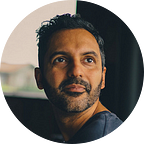Ho Chi Minh, Vietnam
And the journey begins! First stop, Ho Chi Minh.
Right before I left, my family gave me many blessings to have a safe journey.
They walked me all the way to the TSA security line at the airport, waving me goodbye right until the moment I had to take off my slippers to go through the scanner.
After a smooth flight, I arrived at Ho Chi Minh about 20 hours later. I met up with Dev at the hostel — it was funny that this is the first time we were seeing each other. We had planned the entire trip, with me being in San Francisco, him being in Philadelphia.
We started that evening just walking around Ho Chi Minh, people watching in the park. The warm evenings lends to a lot of people hanging out in the parks. Below people are learning some form of dancing. There were also people working out on public exercise machines, or practicing martial arts, or a variation of some other form of exercise.
We visited a nearby Hindu temple. It was interesting to see the slight difference in the style of the statues — the faces of gods were softer, fuller, than those in India.
The War Museum
The next day we visited the War Museum. We ended up spending 3.5 hours here, and the museum was much bigger than I expected. After walking through many rooms depicting different aspects of the war, I couldn’t help but feel the senseless aggression the U.S. had against the Vietnamese people.
Agent Orange
I was particularly saddened to learn about the Agent Orange Program — where the U.S. sprayed a chemical toxin, dioxin, over the fields in Vietnam to kill all agriculture, and drive people out of the cover of trees. Ironically, this chemical was made by Monsanto, who is now popular for making genetically modified food. After spraying 20 million gallons of this stuff, they succeeded; the result was 400,00 people killed or maimed, and 500,000 children born with birth defects. There were plenty of photos showing deformed children, and it was saddening. Vietnam sought reparations for those affected, but the U.S. government hasn’t given any. Occasionally I saw donation boxes around asking for support to those affected by Agent Orange.
As I left the War Museum, a man selling coconut water approached me, beginning with the usual question, “Where are you from?” In that moment, I opted to say Indian, rather than American; I didn’t want to be associated with what I had just seen in his eyes. I wasn’t sure if the Vietnamese would have some negative sentiment towards Americans. But so far, everyone has been warm and friendly, greeting me with smiles after I tell them I’m an American.
Cu Chi Tunnels
The next day Dev and I took a bus trip 2–3 hours from Ho Chi Minh to visit to Cu Chi tunnels. Cu Chi is a region where several villages existed. At some point in the Vietnam War the Viet Cong built a network of 75 miles of underground tunnels. This amazing network had various rooms underground, so soldiers could eat, sleep, work. The tunnels were built in an elaborate manner that made it difficult for the American army to breach them in any way, and certain tunnel openings were traps for would-be intruders.
Our group got to climb into one of the actual tunnel openings, but these tunnels are small, too tight for many of the tourists. So they built a slightly larger tunnel which tourists could go through, about 100 feet long. This was just to give us a taste, but imagine going through the actual tunnels, pitch black darkness, leading deeper into the earth, eventually into large rooms to inhabit.
Towards the end of the the tour, we were given the chance to buy 10 bullets and shoot them through a rifle of our choice — including an AK-47. I do have he curiosity of what it is like to shoot a gun, but it felt spiritually wrong to do it at Cu Chi, where so many have fought and died. It felt like I would be supporting what happened there in some way, or trivializing it. I’m appalled that the government is even providing it as an option, but perhaps the Vietnamese see it in a more practical way. A few people in our group did opt in to try these guns. During this part of the tour there was a snack booth, and I enjoyed some chocolate ice cream while hearing the sounds of AK-47s and other rifles shooting in the background.
So in combination of visiting the War Museum and Cu Chi tunnels, I left Ho Chi Minh feeling a lot of sympathy for the Vietnamese people, who have endured a lot of suffering at the hands of the American government from 1965–1973.
My next stop would be Dalat, an old French colonial-style town up in the hills, where the temperatures are like 75 in the day, 68 at night — a very cold place according to locals. A relief from the heat for me — temperatures were in the high 80s in Ho Chi Minh.
